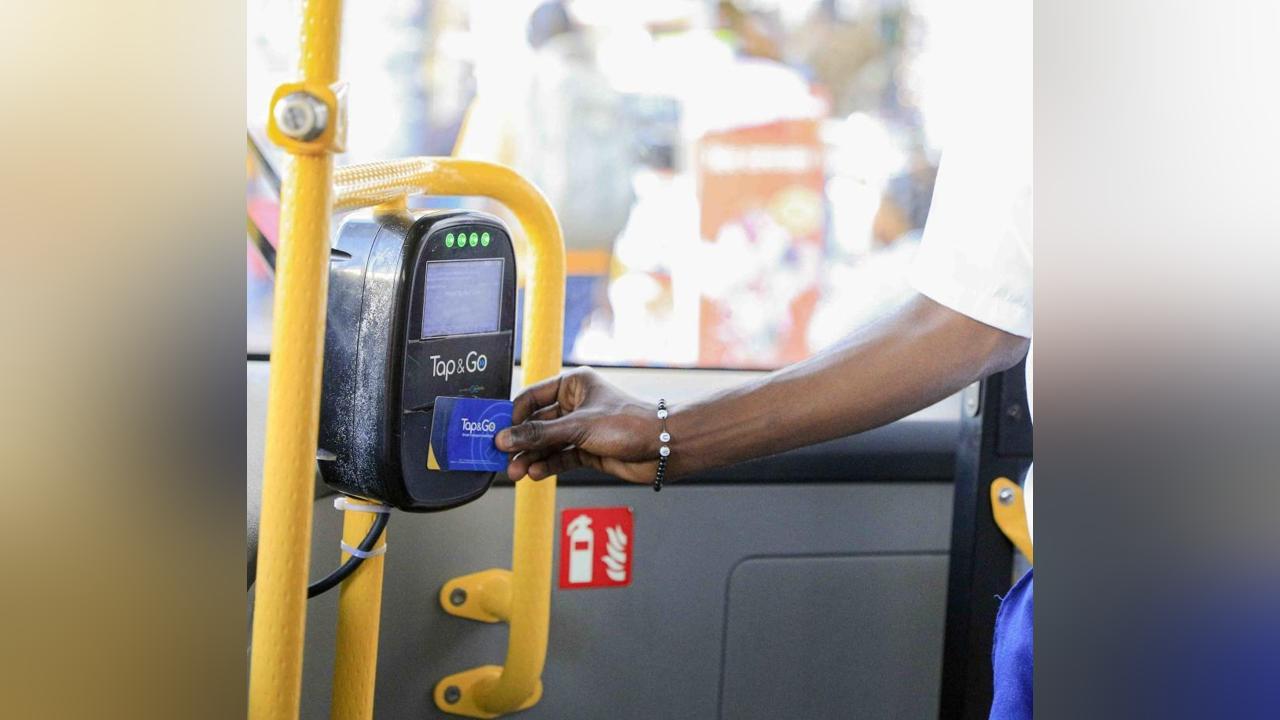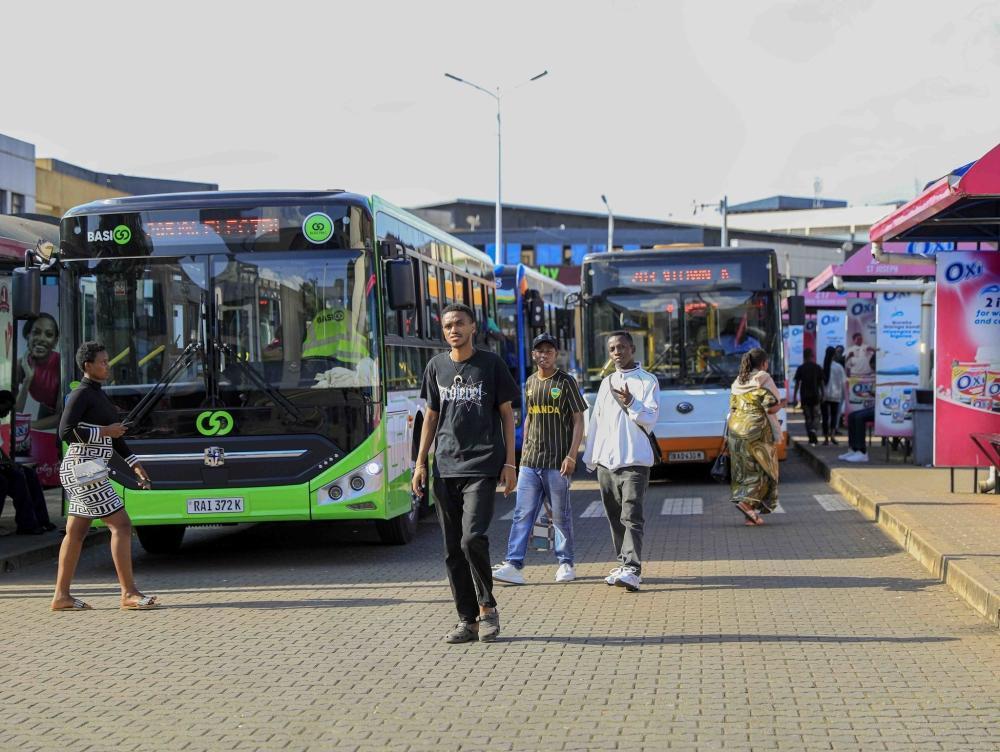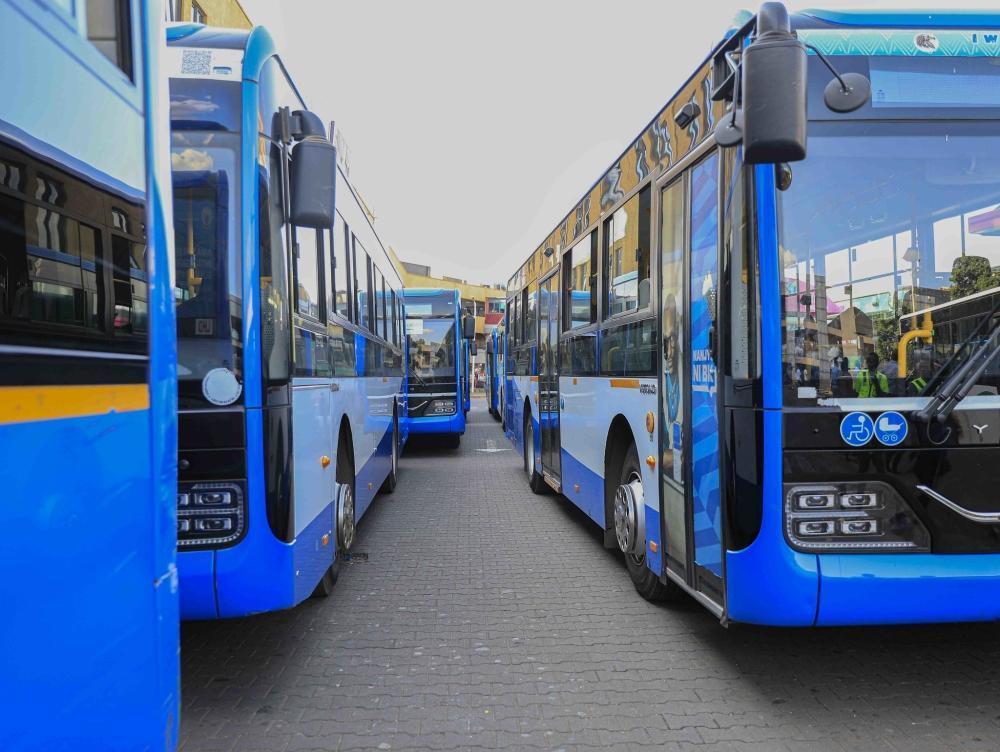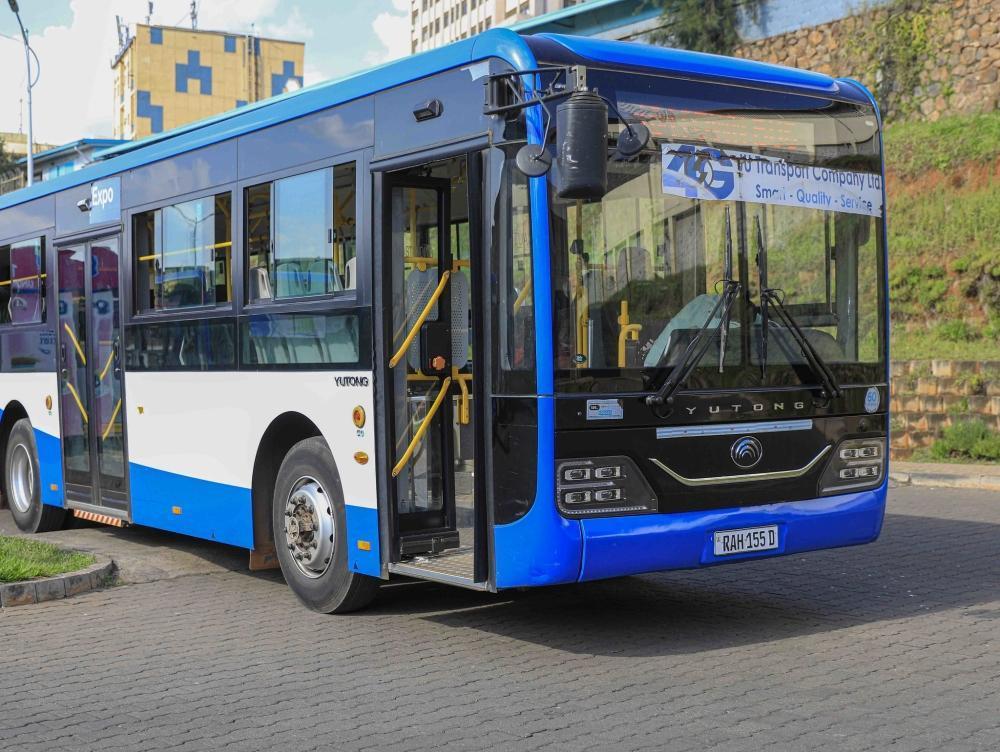Africa-Press – Rwanda. A distance-based fare system continues to roll out across bus routes in Kigali, with commuters reporting improved cost fairness despite persistent technical issues and limited public understanding.
Under the system launched on December 4, 2024, passengers pay fares proportional to the distance travelled and are refunded if they disembark before reaching the final stop. A Tap&Go card is used at entry and exit points to track the distance covered and a refund is duly given.
Gilbert Mucyo, a resident of Muhima Sector in Nyarugenge District, regularly uses the Nyabugogo–Kimironko route. He said he once paid Rwf502 and expected around Rwf200 refund after getting off at Gishushu, but the system malfunctioned.
“I tapped the card and ended up losing the extra money. I was told to wait a few minutes, but the bus was moving and I had already reached my stop,” he said.
For some commuters, the system is working as envisioned. Amiel Nyirinkindi, who resides in Ndera Sector, Gasabo District, often uses a bus on the Kimironko-Kabuga route and regularly receives a Rwf185 refund after paying Rwf506, as he leaves the bus and takes another trip home before the bus reaches the bus station.
“It’s especially helpful for people who take multiple trips. The challenge is when buses change routes due to traffic or road closures, then the system doesn’t work properly and the refund doesn’t cant be done.”
Jaqueline Uwimana, a regular commuter on the Nyanza–Downtown route, noted that many passengers are unaware of the refund feature.
“Some don’t even tap their cards when getting off while they leave before reaching the bus stations. I often go to the last stop, so I don’t use the refund system much myself,” she said.
Nadine Ishimwe, another city resident from Nyamirambo Sector, in Nyarugenge District, shared the same view.
“I always tap my card again before getting off to get the balance. But I have never checked if the money actually goes back,” she admitted.
Drivers’ perspectives
Alphonse Nkuranga, a bus driver who operates on the Downtown–Gikondo route, said refunds depend on strict adherence to designated roads.
“When a bus changes route, to avoid traffic, or route closures, the GPS disconnects and passengers won’t be refunded until the bus rejoins the original path,” Nkuranga said. Some commuters use one card to tap in for multiple people to tap in and out. “The system may deduct money again, thinking it’s a new trip. Also, the refund sound is softer than the payment sound, so passengers often miss it,” Nkuranga said.
To address such confusion, drivers advise passengers to wait briefly after tapping before removing the card.
“Even if there’s a slight deduction for the first kilometre, they usually get the balance,” he noted.
Charles Hagenimana, who drives on the Remera–Downtown route, said the system reduced passenger complaints.
“Previously, everyone paid the same fare regardless of where they got off. Now, it’s distance-based, which is fair,” he said, and highlighted issues where passengers exploit the system.
“If someone taps in, then taps out before departure, they’re refunded, but the company loses that fare. Some people even tap twice for others using the same card,” he said.
Drivers are trained to use ‘deliver cards’ that link the bus to the GPS system before departure.
“Changing routes is discouraged because when GPS disconnects, refund calculations stop. Drivers must return to the correct route so passengers can receive what they’re owed,” Hagenimana noted.
For More News And Analysis About Rwanda Follow Africa-Press









